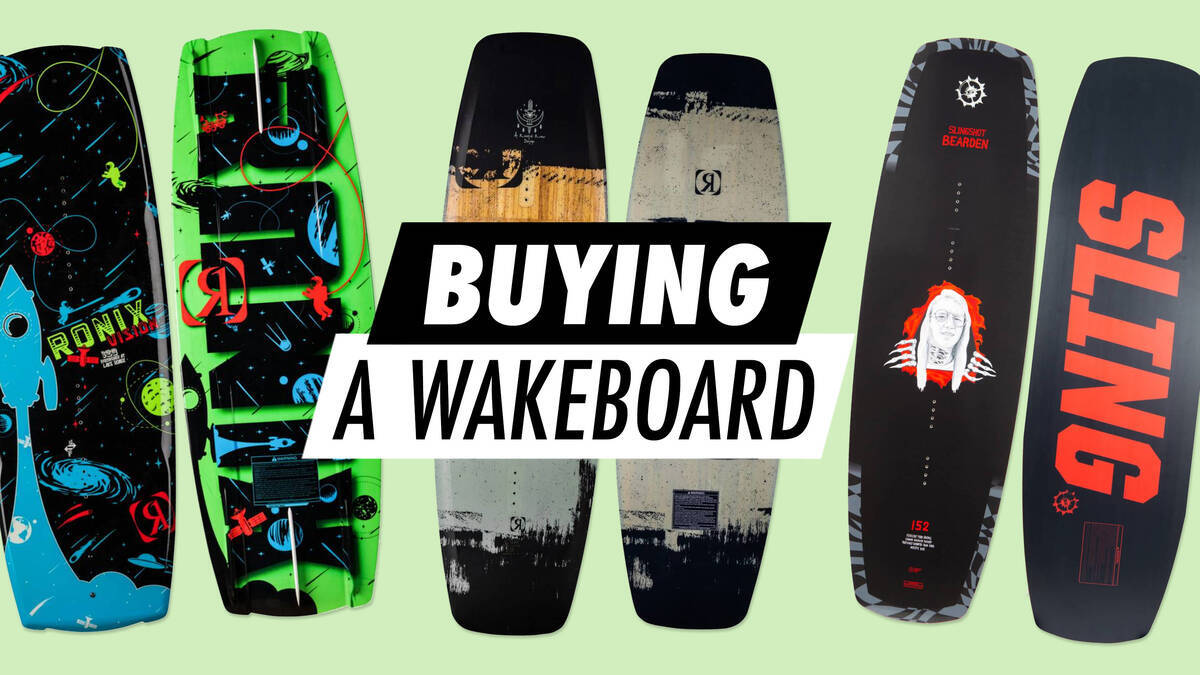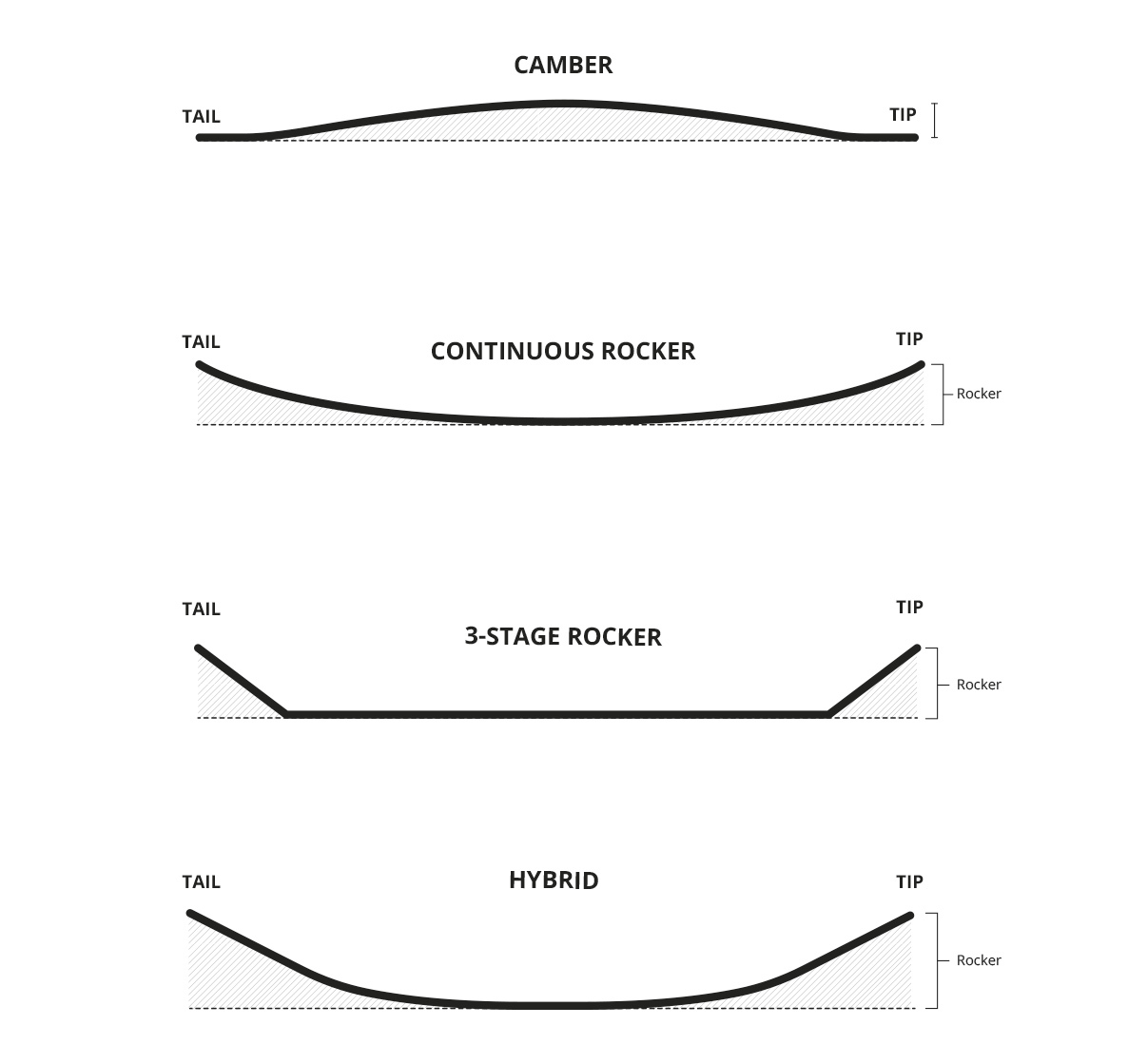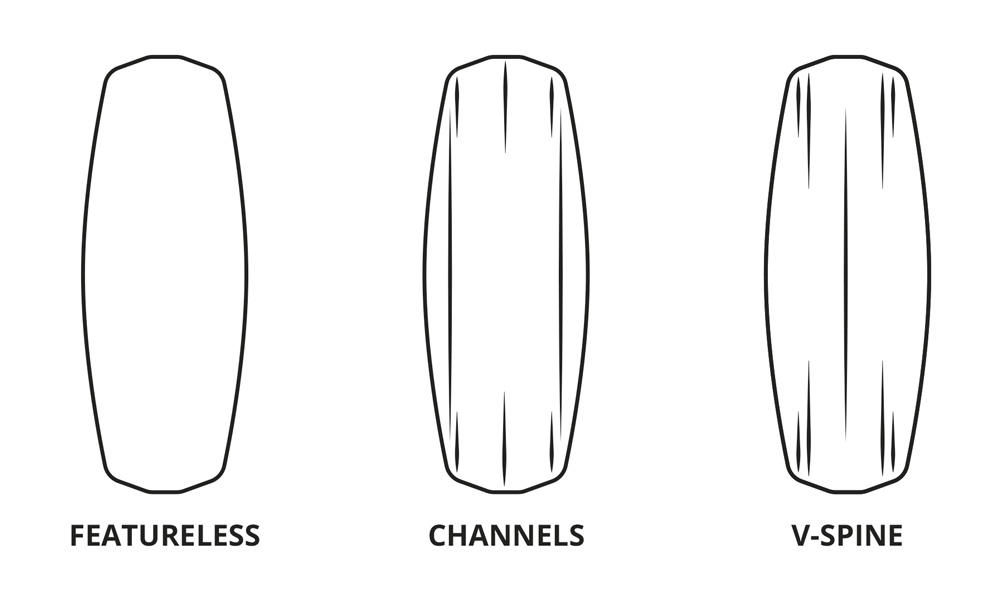Purchasing a Wakeboard

Prepared to go wakeboarding? Here is a straightforward guide to what factors you should consider before purchasing your equipment.
1. Style of Wakeboarding and Flexibility
The primary consideration is the style of wakeboarding you intend to pursue. There are two styles: Cable park and boat wakeboarding. Cable park wakeboarding is self-explanatory - you are pulled by an overhead cable (akin to drag lifts at ski resorts). These boards tend to have greater flexibility, plain bases, and detachable (or no) fins. Boat wakeboarding involves being towed by a boat, and the wakeboards designed for this style are more rigid (less flexibility), have features on the base that make edging into the wake easier, and are equipped with various fins.
A hybrid board is also available, combining attributes of both cable and boat wakeboarding - with medium flexibility (softer at the tips and tail, and stiffer between the bindings), basic base design, and removable fins.
2. Length
Determining the appropriate length is crucial when selecting a wakeboard. The length is dictated by the rider's weight, and if several individuals will use the board, it's wise to adjust the board to suit the heaviest rider. Below is a table offering recommended wakeboard lengths based on weight, along with a brief note on sizing adjustments.

Note that this serves as a general guide, hence recommendations may vary between products.
Should you opt for a slightly shorter or longer board?
Choosing a longer board is increasingly popular among riders (novices and experienced alike), particularly those at cable parks. Selecting a longer board simplifies the ride and provides a better lift off the wake. Larger boards also offer softer landings, increased speed, and enhanced control when attempting tricks for the first time (due to the greater surface area in contact with the water). They bend more effectively, have larger balance points during presses, and offer more power for air-tricks.
Smaller boards are more agile, yet slower and more challenging to propel through the water (due to reduced surface area contact). Landings are harder on smaller boards, with a higher chance of nosediving.
3. Rocker
Rocker refers to the board's curve (bend) profile. Two principal types exist: continuous and 3-stage rocker. Recently, cambered (akin to the curve profiles of skis and snowboards) and hybrid (combining continuous and 3-stage) rocker boards have gained popularity.

- Continuous rocker offers a smooth, uniform curve. Boards with a continuous rocker provide a smoother, faster ride, softer landings, and effortless carving. This shape is commonly used for cable park riding;
- 3-stage rocker profile features three distinct planes on the board's bottom. This assists the board in achieving greater height off the wake. However, it also slows the board slightly, causing it to plough through the water rather than glide. This rocker suits intermediate and advanced riders, frequently chosen for riding behind a boat.
- Camber rocker is a more recent design. It distributes the rider's weight more evenly, reducing pressure on the back foot and promoting a more natural posture. Transitioning from a continuous or 3-stage rocker to a camber may require adjustment.
- Hybrid rockers merge aspects of the initial two types: a gentler curve in the middle and more pronounced tips and tails. This shape is beneficial both in the park and behind a boat.
4. Base Shapes
Beyond appealing designs, the wakeboard's base comes in various shapes that influence the ride. Three primary base shapes exist - featureless, with channels, and V-shape spine. Moreover, there are concaves, specifically shaped dents that create lift and reduce suction by acting as accelerators.

- Featureless base lacks moulded-in fins or channels, so the ride is affected by the overall shape, rocker, and fins;
- Channels on your board function as elongated, extruded fins that disperse surface tension upon landing; they also aid in directing water flow.
- V-shape spines, similar to channels, soften landings and facilitate transitions from one board edge to another (often included in 3-stage rocker boards).
5. Fins
Two principal fin types exist: moulded-in (permanent) and removable. Beginner boards often have both. You might choose finless (removing your fins), particularly in a cable park, to maximise obstacle use and prevent catching a fin while sliding.
Fins can primarily be long or short, where longer fins offer a more stable and predictable ride (ideal for beginners), whereas shorter fins allow greater freedom and a looser sensation on the water (for intermediate and advanced riders).
6. Edges
When considering the edges, align them with your riding style or desired style.
Sharp edges suit aggressive riders who make deeper cuts into the water with higher speed. Round edges, in contrast, benefit laid-back riders focusing on surface glides and tricks.
Variable edges provide a mix of both sharp and round edge characteristics. This involves sharper tips and tails (for more grip and cutting power) with rounder edges mid-board (for a smoother feel).
In conclusion, consider the following before acquiring your wakeboard:
- The style of riding and flexibility
- Length
- The rocker
- The base shapes
- The fins
- And the edges
And remember - always enjoy your time on the water!
